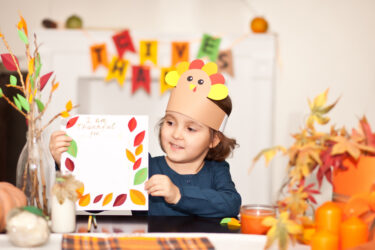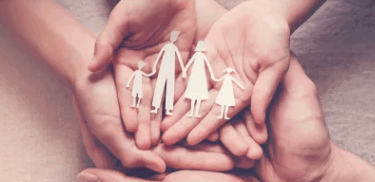Picking up my 2-year-old from her Parents’ Day Out last spring, I was shocked when her caregiver asked if she’d be entering their preschool program in the fall, just after her third birthday. How did this happen so soon? Could I possibly have a child ready for school?
Suddenly, it seemed my husband and I had a huge decision to make. Even though our daughter had been attending Parents’ Day Out once a week for more than a year, that was merely a place for her to play and make friends — somehow very different from preschool. We agonized over what kind of program she should enter, how many days she should attend, and whether or not the teachers provided loving, safe care as well as an atmosphere conducive to learning. You would think we were enrolling her in college!
Choosing and enrolling your child in a preschool can be a major decision. It’ll likely be the first step towards formal education and should be a positive experience.
Today, nearly half of all 3-year-olds and 70 percent of 4-year-olds are in some kind of preschool program, says Mark Ginsberg, Ph.D., a past executive director of the National Association for the Education of Young Children (NAEYC), the world’s largest organization working on behalf of young children. Although this trend may reflect the rise in working moms, it’s mostly due to the recognition that preschool provides a strong foundation for learning.
In Search of Quality
For help with choosing the right preschool for your child, a good first step is to contact 4C for Children (800-256-1296 or 4cforchildren.org), a childcare referral service for both Ohio and Kentucky. Along with a searchable database of programs and checklists of questions to ask, 4C for Children also offers assistance to parents with special needs children plus news and blogs about early childhood development.
Laura Heuser, manager of Childcare Resource and Referral Services at 4C, recommends that parents follow a three-step process:

- Call the preschools that interest you and interview them over the phone to see if they can even meet your needs in terms of schedules, hours, etc.
- Visit the preschool on your own to get a feel for the place.
- Visit the school again with your child to see how he interacts with the teachers and environment.
Always take a tour of the preschool before enrolling your child. Look to see if the children appear happy, if the toys and materials are in good condition and accessible to children, if the rooms are spacious and if the teacher interacts with the children on their level, making them all feel included in activities.A good preschool program will support the cognitive, physical, social and emotional development of your child. It should be safe, clean and provide plenty of age-appropriate materials and equipment. There should be planned activities and a daily schedule available to parents. Most preschools hold open houses in October and November and take applications from November to February. Start investigating programs now, if you want your child to attend next fall. The NAEYC encourages parents to look for small ratios of children to each caregiver. The maximum allowable caregiver-to-child ratio for 3-year-olds is one to 10, but lower ratios are better. Studies have shown that low caregiver-to-child ratios are one of the most significant factors in promoting learning and decreasing behavior problems. The NAEYC recommends classes of no more than 14 for 2-and-a-half-year-olds to 3-year-olds, or 10 for 3- to 5-year-olds.
Also look for consistency in staffing. Staff turnover can be frequent at some preschools, so be sure to inquire about how long the teachers have been on staff when investigating a program. Turnover of teachers is not only difficult on children, but it may indicate an interior problem.
Teacher training is another consideration. There are a variety of levels of education among caregivers, however, an ideal teacher will have classroom experience as well as a bachelor’s or associate’s degree in early childhood education.
There are also more formal methods for measuring a quality preschool. In Ohio, the Step Up to Quality program was created to help parents find preschools that go above and beyond minimum licensing standards. Preschools engage on a voluntary basis, and their teachers will complete 10 hours of specialized training each year, and plan activities using Ohio’s Infant & Toddler Guidelines and Early Learning Content Standards. Under the Step Up to Quality program (stepuptoquality.org), preschools progress from one to three stars, with each step marking additional achievements in training, teacher-to-student ratios, curriculum planning, and benefits to teachers that aid in retaining staff. Kentucky programs may participate in the STARS for KIDS NOW (education.ky.gov), a four-star quality rating system that requires programs to offer benefits like additional teacher training and family involvement activities.
Enriching the Preschool Years
If you decide preschool is not for your child, or if you simply want to help enrich the years before kindergarten (very important now with the advanced Common Core standards in public schools), there are plenty of activities you can do at home. “We encourage all families to continue reading with their children,” says Heuser, adding that aside from it just being a good chance to spend time together, it’s an opportunity to further your child’s development. Asking them questions about the story, letting them “read” a story to you and sharing their ideas are all a part of developing early literacy skills. Coloring and writing are other good activities to practice. Heuser also recommends that parents find opportunities to enjoy the outside and explore the natural world around them.
With preparation and a little luck, as you watch your child enter the classroom that first day, the only tears fought back will be your own.
Breaking Down Preschools
Montessori
An educational approach developed by Maria Montessori that is characterized by a focus on independence, mixed age classrooms, a range of activity options from which students may choose, uninterrupted blocks of “work time,” freedom of movement within the classroom, and a “discovery” model of learning, meaning that students learn from working with materials, rather than from direct instruction.
Reggio Emilia
The Reggio Emilia approach views children as curious, independent learners who partner with their educators in learning. The approach emphasizes project work that allows children to focus on a selected topic in great detail, with both their own documents (art work, stories, etc.) and those of their educators (photos, videos, etc.) relating the children’s experiences and progress.
Play-based Preschool
An umbrella term that describes many preschool programs, play-based programs are usually broken into sections, like a science area, a reading nook, a space with toys, etc. Kids develop social skills like cooperation, as well as academic skills like early math or how signs work, all while playing with the materials available.
Waldorf
A preschool Waldorf education is built around activities like nature walks and outdoor play, as well as art activities and imaginative play, all designed to strengthen a child’s emotional, social and cognitive development. Teachers provide a safe environment that encourages a child’s natural curiosity. The presence of wooden toys and natural materials and the absence of computers and other electronics are a hallmark of a Waldorf school.
Academic Preschool
Another umbrella term that describes programs where teachers offer a more structured environment with planned activities through which children are guided.
Amanda Contrelle Roche is a mother and freelance writer.





